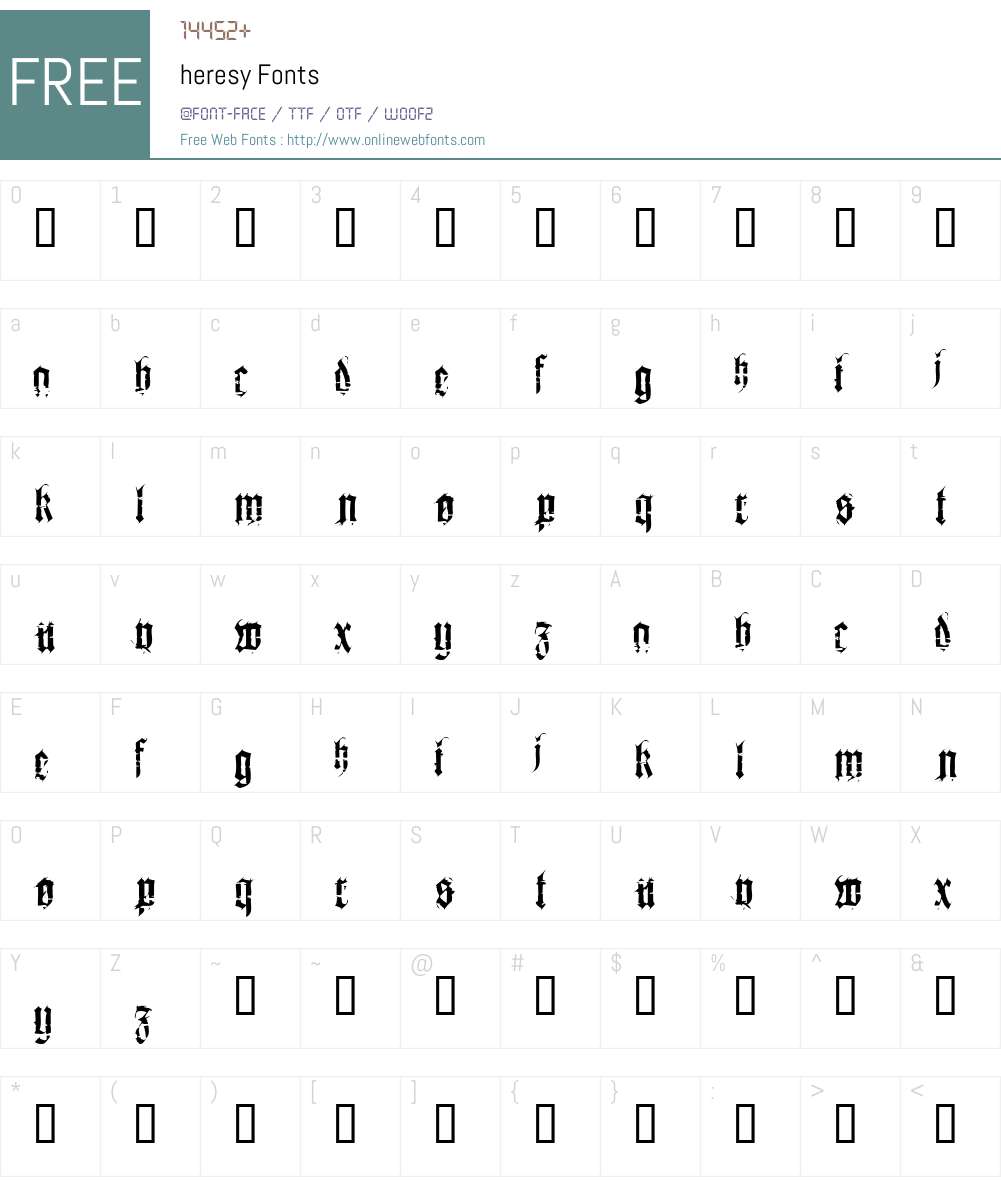

Split out rusttype into the drawing bits, and the nondrawing bits.So maybe the rusttype drawing apis are the bit that don't fit. So here rusttype and bitmaps don't gel very well, and this makes me wonder if rusttype should be outline-only. Subpixel rendering must be handled differently for outlines & bitmaps. Texture management is mostly done by the rusttype::gpu_cache, it works with rusttype rasterization and manages an alpha-only texture that takes careful account of subpixel differences.Ĭolour bitmaps can never live on the same texture as the outline fonts, though colourless ones could. All the stuff needed to position glyphs should be implementable for any kind of font. This is why I thought it would be good to get rusttype to support the font type. It would honestly be a pain to generalise it.
Heretic game bitmap font code#
The layout code is all written around the rusttype font/glyph apis. whenever possible just to be 100% certain that kind of shit won't become a problem later.Gfx-glyph is a layout -> texture -> vertex pipe.
Heretic game bitmap font free#
I don't worry too much about it for personal stuff, but if there's any chance it's something that'll be used/seen by others I make sure to stick to creative commons works, free software, fonts I know are free, etc. You can be minding your own business not even realising you're doing anything "wrong" and later find out you violated some licensing terms somewhere without ever knowing it. And not just with fonts, though they're especially easy to do it with. There's a lot of casual, unintentional "piracy" like that. So I downloaded them thinking they were free fonts, only to encounter a few again much later elsewhere and discover they were paid fonts that somehow made their way onto sites with "free" font collections. I have a bunch of older fonts that I couldn't even tell you what the licensing is for them, because I got them forever ago from random places and that information was completely unavailable usually, sometimes even outright wrong. I figured you (and the others that mentioned it) just didn't think about the licensing, since it's something that gets overlooked a lot with fonts. Suggesting Input to /u/3rdRealm here is like suggesting Getty Images to someone that's looking for a good source of Creative Commons photographs: it'll do the job well but is a tone-deaf answer because it completely misses the mark for that person's requirements.
Heretic game bitmap font license#
You can use pay a fee to use the font in some ways that are prohibited in the no-cost license (like use in PDFs, documents, websites, and applications), but that's still not suitable for what the OP wants. There's no cost for personal use (meaning use on your machine for things like an editor font), but you still have to agree to this license that prohibits general modification outside of what's done by the provided Python script, prohibits redistribution, limits where and how you can use the font, and just generally runs afoul of open-source licensing. I use and really like that font as well, but I didn't suggest it here because it doesn't meet one of OP's non-negotiable requirements: I'm surprised to see only 1 mention of the Input font: It's a pity that editors don't support smarter indentation rendering for proportional fonts, at least for leading indentation.

I also used various proportional fonts for coding, but those don't work very well with Clojure, where 1-2 space indentation is common. I bet people, who like Menlo, would also like Ubuntu Mono. What was new to me from this thread and made me curious are these fonts: I saw Fantasque Sans Mono being mentioned here, which sounds like a next-gen Comic Mono: That being said, I just switched to Comic Mono a month ago and I'm surprisingly happy with it. Using 0.9 line height at a font size of 14, I can fit about ~80 lines of code on a 1440px high screen, in a maximized, but not full-screened, IntelliJ window. I turn off line numbers and gutter icons though, so I can see 80+ chars per line in each vertical split.
It allows me to comfortably put 3 columns of code next to each other, eg implementation code, test code, REPL. I typically use Input Compressed, with the default font weight being bold, so it's more readable on both low and high DPI screens. I don't like some of the glyph shapes in Iosevka, like the curvature of the letter v, or the extreme serif sizes, so I was happy to find the Input font. It's quite similar to Iosevka, and it's extremely customizable.


 0 kommentar(er)
0 kommentar(er)
